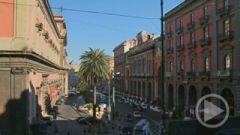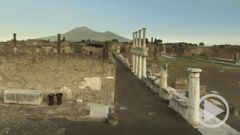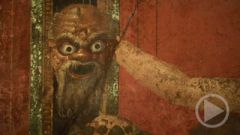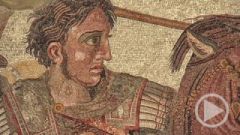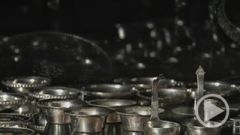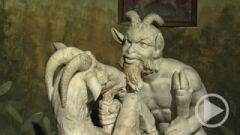The Villa dei Papiri
The Villa dei Papiri
In 1750, workers digging a well before the gates of Herculaneum once again came across antique ruins – and once again the discovery was a sensation. An amazing trove of bronze figures was unearthed.

Charles III ordered targeted excavations, initially headed by (Don) Roque Joaquin Alcubierre. An army engineer, he belonged to the old school of archaeologists, more interested in treasure than knowledge. He even discarded many of the finds, including bronze inscriptions. That changed once his assistant took over the work. Karl Weber, a Swiss engineer, tunneled systematically through the site. After four years of patient puzzling together of his finds he was able to work out a ground plan. What the archaeologists had found was a villa, a splendid country manor –the largest in the Roman world. On a slope overlooking the sea, its front stretched 800 feet along the shoreline. It was incredibly richly furnished.

Valeria Sampaolo, Director of the museum:
"The last owner had a collection of bronze and marble sculptures which is highly significant because it tells us about the tastes and the cultural level of the senatorial aristocracy he probably belonged to. There are various hypotheses about who the owner might have been and one thinks of Calpurnius Caesoninus Piso, the father-in-law of Julius Caesar. Among the material from the villa are a series of portraits of Hellenistic rulers – actually philosophers – that underscores how much the Romans adhered to the Greek cultural ideal. They saw in it the organization of the state according to norms, according to laws which were represented by philosophers and orators, and there are also statues of orators.”

Conspicuous among the more than 90 statues are five superb female figures, made of bronze with eyes of colored glass. They wear the peplos, an ancient Greek garment. Winckelmann thought they were dancers; later scholars considered them to be water carriers.
Today it’s believed that they are Danaids – five of the 50 daughters of King Danaus, a mythological ancestor of the Greeks. On his order the Danaids killed their husbands on their wedding night. In this way they saved Greece – but they were punished by the gods for the murders and condemned to eternally carry water to fill a leaky tub.
Such ancient myths were a natural part of everyday life in antiquity. They helped to root people in their history and gave them a sense of community. They were also exploited by politicians. The first emperor, Augustus, for example, was a master of propaganda. He had statues of the Danaids erected in his Apollo Temple in Rome. The message was clear: just as the daughters in obedience to their father had killed their husbands to rescue Greece, so had Augustus out of loyalty to the Republic fought the civil war against his own family to save Rome.
These two figures are also thought to be copies of Greek statues, probably dating from the late third or early second century BC – the Hellenistic period. For a time, they were believed to depict wrestlers, but their forward-leaning posture argues against that – they would have been too easily thrown off balance. Today they are thought to be runners at the start of a race, possibly athletes at the Panhellenic games. These competitions took place regularly, not only at Olympia, but at other locations, too – and they were attended by athletes from across the Greek world.

The Villa of the Papyri has become the ideal image of a luxurious Roman residence. In the 1970s, oil billionaire J. Paul Getty used it as the inspiration for his museum in Los Angeles.The most important find, which gave the villa its modern name, was made in the autumn of 1752 next to the house’s atrium: more than 1800 papyrus scrolls – the only surviving library of antiquity. Although the rolls were charred and flattened, the researchers tried at once to unroll them – which caused them to crumble. They kept trying for several years until Father Antonio Piaggio, a restorer of antiquities at the Vatican Library, developed a special machine. It enabled the papyrus scrolls to be unrolled slowly and to be reinforced with a membrane made of pig’s bladder. Finally the texts could be deciphered. The scrolls mainly consisted of Epicurean philosophical writings, including a previously unknown major work by Epicurus himself.

The small busts of the philosophers probably stood in the library shelves to mark the location of their works. Many of the works are by Philodemus of Gadara, a philosopher from the first century BC. It’s thought that this may have been HIS library, particularly since Philodemus was known as a friend of Caesar’s father-in-law Caesoninus Piso.
Nearly all the texts are in Greek, only few of them are in Latin. So could there have been a second, Latin library? Scholars are still wondering – since the Villa of the Papyri has not been completely excavated. In 1765 Karl Weber had to close the excavating tunnels – the build-up of toxic gases was making the work impossible.

It was not until more than two hundred years later that archaeologists uncovered a small part of the palace. It turned out to be even larger than people had thought. It had not just one floor, but four extending along the coast. The debate continues about whether the rest of the villa should be excavated. Even today that would be a challenging task, given the walls of petrified ash under which it is buried.


